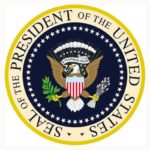“3 Must-Have Supreme Court Nomination Documents” looks at President Ronald Reagan’s appointment of Supreme Court Justice Antonin Scalia in 1986. Primary Source A outlines the suggested qualities of an ideal candidate for President Reagan to nominate to the Supreme Court. Primary Source B provides a Memo to the President from Peter J.
Wallison, Counsel to the President, in which Wallison provides background information with a few potential questions for both Justice Rehnquist and Judge Scalia. Primary Source C is a transcript from President Reagan’s August 9, 1986, Radio Talk on the appointment of the Supreme Court Justices. Each of these documents showcase the amount of thought and consideration the president must take when nominating a Supreme Court Justice.
The Electoral College
Today, the American people vote for president and vice president on Election Day. But, technically speaking, these votes don’t directly determine the outcome of the election. These popular votes determine which electors will be appointed to the Electoral College, which is made up of 538 electors drawn from the states and the District of Columbia. Each state is granted a different number of electoral votes based on the size of its congressional delegation. The electors meet after the general election to cast their votes for president and vice president.
Civic Friendship: ‘I Am Rooting Hard for You’
“You will be our President when you read this note. I wish you well. I wish your family well. Your success now is our country’s success. I am rooting hard for you.”
It doesn’t sound like a note that a politician would write to the man who had just defeated him in a hotly contested election for the highest office in the nation just a few months prior, yet these are the exact words penned by President George H.W. Bush to his successor, newly inaugurated President Bill Clinton, on January 20, 1993. Many of the tributes to the former president recounted the story of this note as evidence of the character of the man, of his grace and humility. In this eLesson, students will explore the importance of character traits like humility and respect in the individuals who hold public office and how commitment to the rule of law has sustained the executive branch throughout the country’s history.
Starter Kit: Executive Branch Podcast
In this episode of our Starter Kit series, a primer on the powers of the President, both constitutional and extra-constitutional. What can a president do? How long do a president’s actions reverberate? Why don’t we do treaties anymore?
Also, a super-inefficient mnemonic device to remember the 15 executive departments in the order of their creation.
This short episode includes a one-page Graphic Organizer for students to take notes on while listening, as well as discussion questions on the back side.
Presidential Inaugurations, Past and Present
Every four years, on the steps of the U.S. Capitol building, the newly-elected President of the United States is inaugurated. This event not only includes the president taking the oath of office, but also provides the opportunity for the new President to lay out the direction he hopes to take the country. By analyzing historic texts and visuals, students can find common themes as well as important differences when comparing different inaugurations.
The Appointment of Sandra Day O’Connor
The U.S. Constitution grants the President the power to appoint people to a variety of government positions. These appointments require careful thought and consideration since the people can have a great impact on the lives of many Americans during that President’s term. Some appointments need even greater thought and consideration, and those are to the federal judicial system and more importantly, to the Supreme Court of the United States. Justices of the Supreme Court (and other federal courts) serve lifetime appointments. Their rulings as they interpret the Constitution, and other situations as outlined in Article III of the Constitution, can have far-reaching effects for generations. With this awesome power to appoint comes an equally awesome responsibility to make sure that the individuals are the best people for the job. In this lesson, students will examine the appointment of Supreme Court Justice Sandra Day O’Connor, who was also the first female Justice. Students will examine the process by which a President makes the selection and the steps that lead to that person being confirmed by the Senate (or not).
Executive Power in Times of Crisis
This lesson explores the use of executive power in times of crisis in relation to both the Constitution and the legislation of the time. Using exclusive primary source material from the National Archives at the Ronald Reagan Presidential Library, students will explore how President Lincoln, President Reagan, and President Obama utilized their executive power against the respective threats of their time.
Article II: The Executive Branch
Article II lays out the Executive Branch of the government, headed by the chief executive, also known as the president. The branch is responsible for enforcing the laws. The article outlines the requirements to be president, the election process, and the duties of the office. Learn all about Article II in the National Constitution Center’s learning module.
The President’s Roles and Responsibilities: Communicating with the President

In order to become informed participants in a democracy, students must learn about the women and men who make decisions concerning their lives, their country, and the world. The president of the United States is one such leader. As a nation, we place no greater responsibility on any one individual than we do on the president. Through several activites, students learn about the roles and responsibilities of the U.S. president and their own roles as citizens of a democracy.
Letters to the President (Elementary)
In this lesson, students will learn both to be informed and to be engaged as they learn about an issue that is important to them, and communicate their thoughts on the issue to the President of the United States.